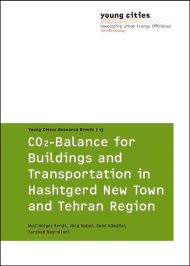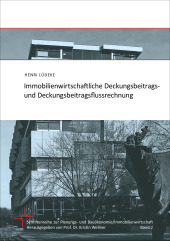CO2-Balance for Buildings and Transportation in Hashtgerd New Town and Tehran Region

Format: 14,8 x 21,0 cm
Publishing year: 2013
Due to the very high energy consumption in the Tehran region, CO2 emissions are also very high, with the residential and commercial buildings making up the largest share of 41% by 2008 and for transportation up to 25%. This publication tries to estimate the results of different planning fields in New Town Hashtgerd and Teheran-Karaj region in Iran regarding the development of CO2 emissions. Concerning this goal the expressiveness of the paper is limited to emissions caused by mixed-use-buildings, office-buildings and transportation. In order to evaluate the project’s impact in terms of CO2 reduction, the emission savings through the implementation of Young Cities’ project findings and recommendations are estimated. The CO2 emissions of buildings and transportation are calculated based on their energy consumption, based on energy simulation, and the CO2 emission factors for different energy carriers. First the specific CO2 emissions are balanced for the project area of Hashtgerd New Town and then they are extrapolated for the whole former Tehran province. The CO2 emissions per capita and year are estimated and compared using two forecast scenarios for the year 2027 based on the preliminary results of the residential and office building as well as transport planning within the Young Cities project. The first scenario “business as usual 2027” visualizes the CO2 emissions in 2027, with the development following the current trends in Iran. The second scenario “planning scenario 2027” forecasts the CO2 emissions for 2027 assuming that two per cent of all new buildings are built according to the results of the Young Cities project and the suggested transportation system is implemented. The comparison of these two scenarios indicates the possible reduction of CO2 emissions for 2027 achieved through the implementation of the Young Cities’ research findings. All areas monitored show significant potentials of possible emission savings which have been developed in the Young Cities project. It therefore appears that the implementation of the developed measures could lead to eminent energy and emission savings in comparison with conventional planning, construction and behaviour approaches. Anyway it needs to be born that the results provided in this paper is based on simulation algorithms trying to represent real conditions as far as possible. As long as those estimations are based on various assumptions meanderings can therefore not be excluded. To fulfil the requirements of an overall CO2 balance in Hashtgerd additional energy intensive fields like industry, agriculture and power plant need to consider as well. Nonetheless the results of this paper underline the effectiveness of the developed approaches and emphasise ways of future development in the Tehran-Karaj region.



